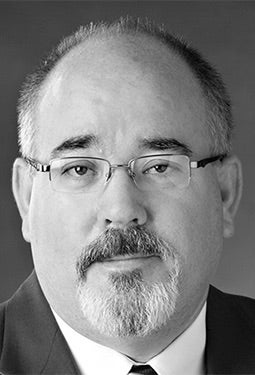In Medicaid debate, look at fast growing rural mortality rates
Published 11:55 am Friday, April 19, 2024

- Sid Salter
By Sid Salter
Columnist
As Mississippi legislators head to conference on the state’s first sincere consideration of some
form of Medicaid expansion, we’ve heard alarms sounded by the right and the left on why the
state alternately should or should not expand Medicaid coverage for the state’s working poor.
Proponents of Medicaid expansion celebrate the fact that Mississippi is finally taking steps
toward reclaiming a portion of the federal tax dollars Mississippians have been paying to provide
expanded Medicaid coverage for the working poor in 40 other states but not in our state where
healthcare disparities loom large in the poorest state in the union.
Opponents of the Mississippi House version of Medicaid expansion in Mississippi and the other
10 states across the country that have not expanded coverage make three primary arguments –
the state can’t afford the state share of the costs, expanding Medicaid will discourage finding
work, and states should not increase enrollment in a “broken program.”
The political wars and the messaging generated by both sides are contradictory and confusing.
But a March 2024 U.S. Department of Agriculture Economic Research Service report suggests
that for rural Mississippians, the state’s Medicaid expansion debate actually might have life or
death consequences.
The report, entitled “The Nature of the Rural-Urban Mortality Gap,” was authored by USDA
economists Kelsey L. Thomas, Elizabeth A. Dobis, and David A. McGranahan.
The researchers concluded that “The 2019 age-adjusted natural-cause mortality (NCM) rate for
the prime working-age population (aged 25–54) was 43 percent higher in rural areas than in
urban areas. This is a shift from 25 years ago when NCM rates in urban and rural areas were
similar for this age group.”
More specifically, the report’s findings were: “There is a growing natural-cause mortality gap
between rural and urban areas of the U.S.; Over the last 20 years, the difference between age-
adjusted natural-cause mortality rates for the overall population in rural and urban areas grew
from being 6 percent higher in rural areas than urban areas in 1999 to 20 percent higher in rural
areas than urban areas in 2019;
“The rural, prime working-age population was the only group to experience an increase in NCM
rates, resulting in an even greater increase in the mortality gap between rural and urban areas. In
1999, the NCM rate for the prime working-age population in rural areas was 6 percent higher
than in urban areas, growing to 43 percent higher in 2019; and the more rural the area, the greater
the increase in prime working-age NCM rates (or smaller the decrease) over time.”
Why does that matter? The report found that rural working-age people in the South are dying at a
higher rate than their urban counterparts – and Mississippi is a rural state.
According to the U.S. Health and Human Services, Mississippi is rural, where 65 (79.3%) of the
82 counties are considered rural areas. Mississippi has three standard metropolitan statistical
areas (MSA): the Jackson Metropolitan Area; the Hattiesburg Area; and the Gulf Coast Region.
Desoto County, located in North Mississippi, is included in the Memphis, Tennessee MSA. All
82 counties in Mississippi are designated whole or in part as medically underserved areas.
Is the lack of expanded Medicaid a sole-source cause of those health disparities? Of course not.
The report’s authors acknowledge high incidences of obesity, smoking, poor-quality diets, and
other place-based influences on the mortality gap, along with: “Both hospital closures and
physician shortages in rural areas are also a growing concern and could lead to higher rural
mortality rates as well.”
They likewise note: “It is plausible that differences in healthcare resources and health behaviors
across urban and rural areas could contribute to the stagnation and even increasing mortality
rates in rural areas, as the accessibility, quality, and affordability of care could be compromised.
Healthcare resources and services vary by population density, often leaving rural areas with
limited medical treatment and less accessible options that could adversely impact mortality
rates.”
The most germane passage in this study of rural people dying faster than urban neighbors is this
one: “Regionally, differences in state implementation of Medicaid expansion under the 2010
Affordable Care Act could have increased implications for uninsured rural residents in states
without expansions by potentially influencing the frequency of medical care for those at risk and
preventive measures.”
Sid Salter is a syndicated columnist. Contact him at sidsalter@sidsalter.com.


